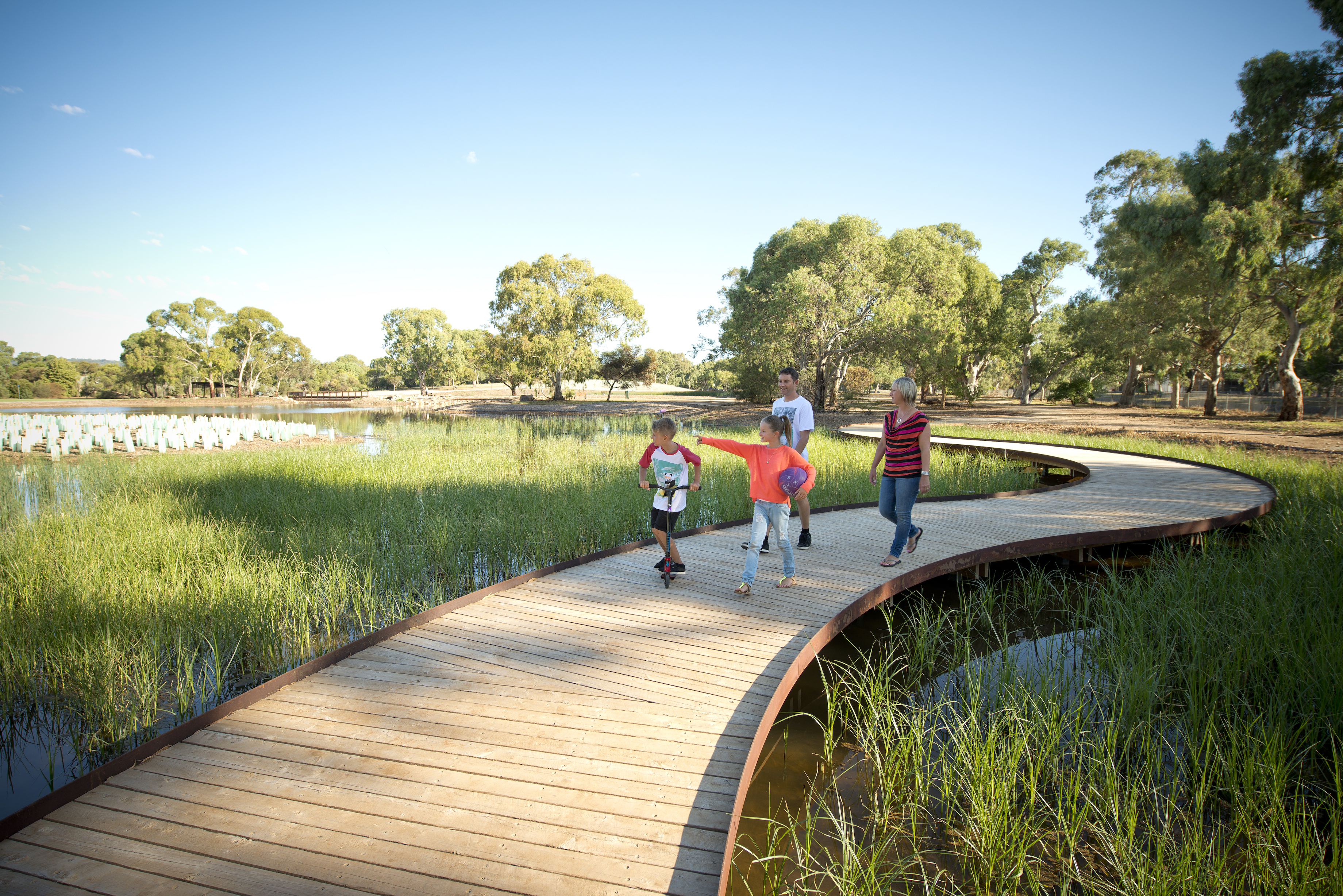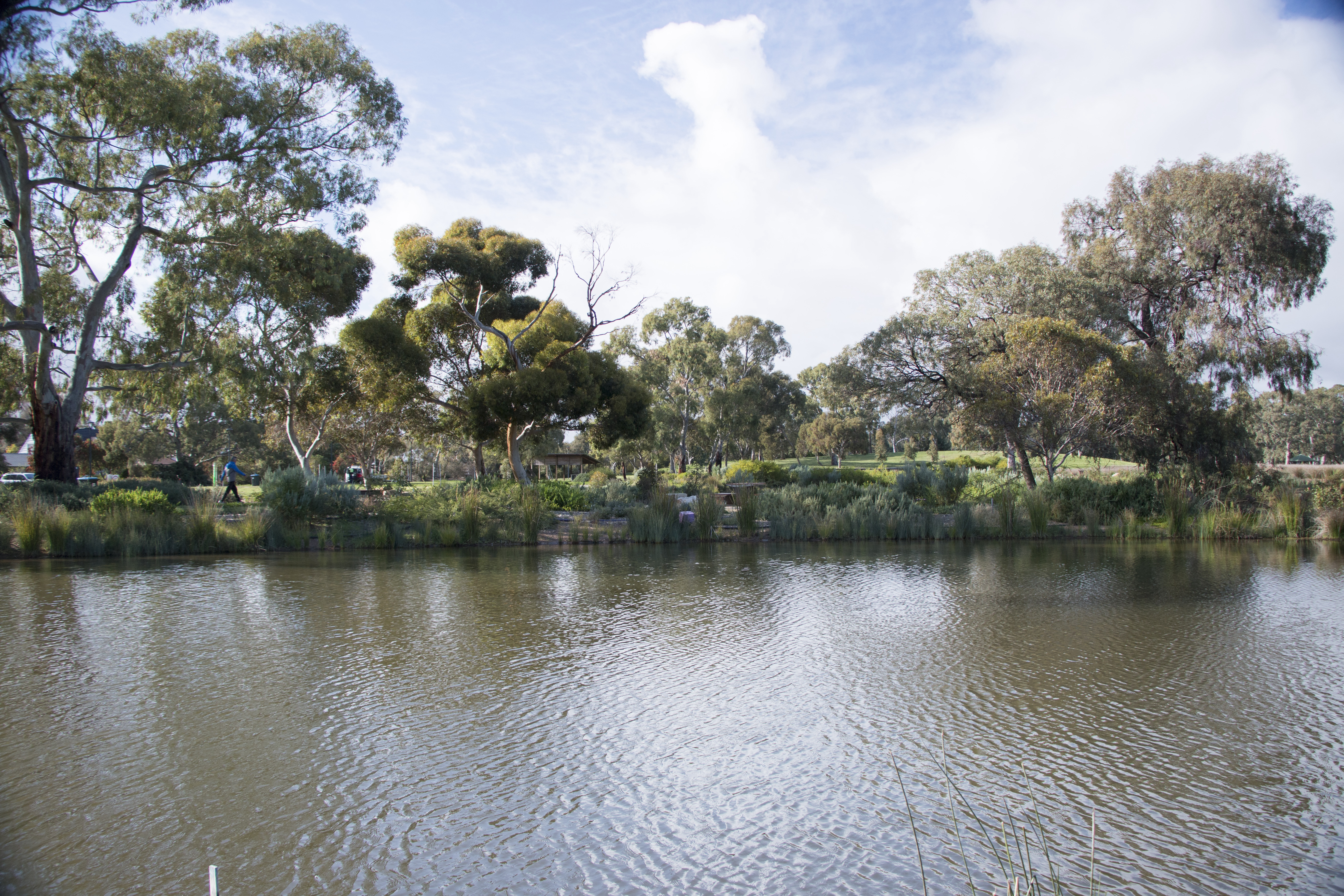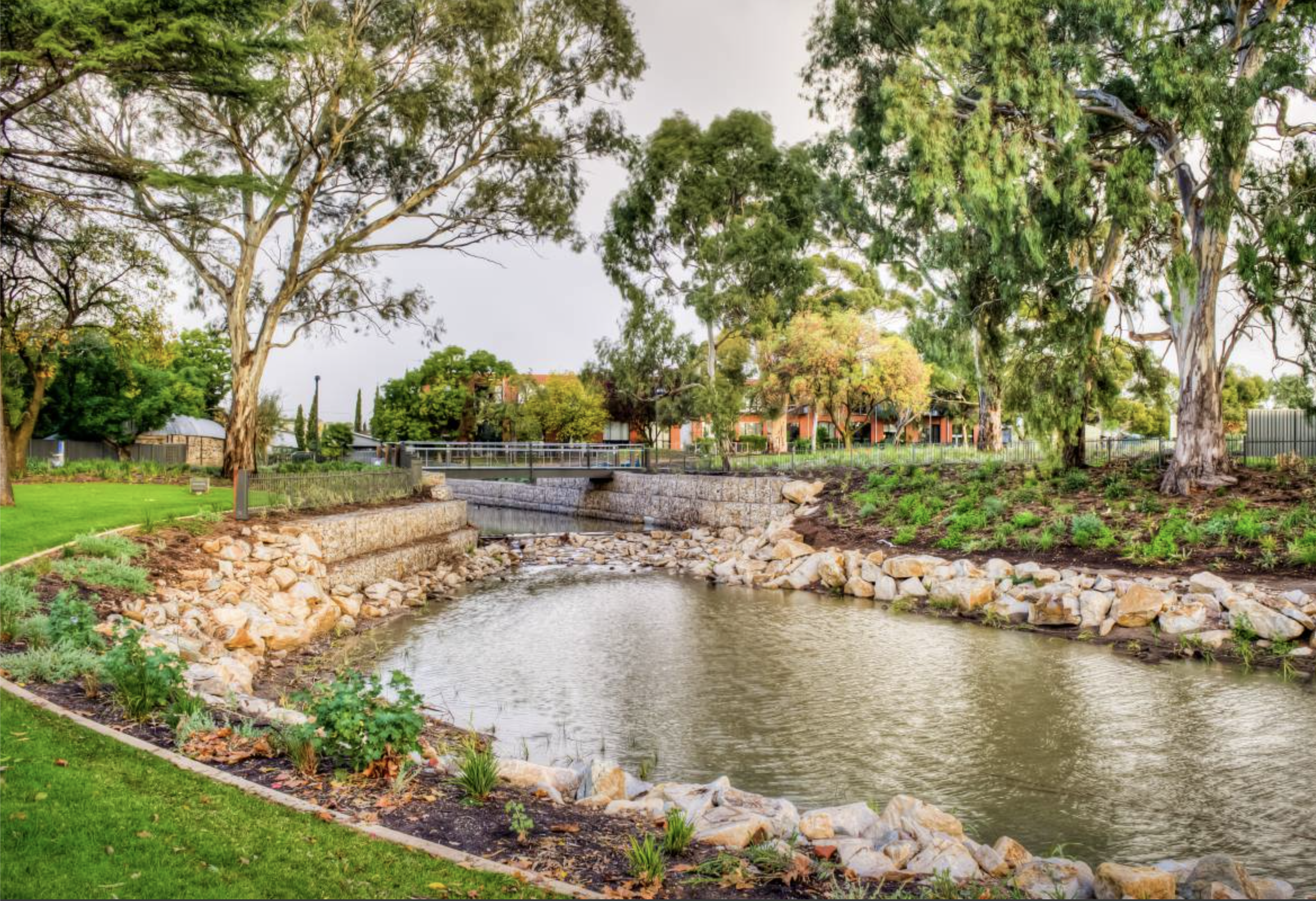It may be out of sight, but groundwater is the world’s top source of freshwater. Find out more, and learn about how groundwater is being replenished at 3 of Adelaide’s creeks and wetlands.

We all know that water is a precious resource for life on Earth. But we may not stop to think about just how rare freshwater is on Earth.
Water covers just over 70% of our magnificent blue planet, but 97% is in the ocean and is too salty to drink and to use for irrigation.
So, just 3% of the Earth’s water is freshwater. This fresh water isn’t always easy to access, some is permanently frozen in icecaps and glaziers, or trapped in the air, clouds and soil. The majority of the freshwater found on Earth is actually groundwater.
What is groundwater?
Groundwater is water that is found beneath the surface of the Earth. It is found in aquifers, which are formations of rock, sand and gravel that can hold water underground.
With this in mind, you can understand why the protection and sustainable use of groundwater plays an important role in Adelaide becoming more climate resilient.
The concept of groundwater recharge is becoming increasingly important around the world to better manage the water sustainably. Groundwater recharge means the process of water entering the groundwater system.
This can occur either naturally when water from the Earth’s surface makes its way into an aquifer, or through human activity.

How is groundwater recharged in Adelaide?
It is recharged using the man-made Managed Aquifer Recharge process that returns treated water from a creek or wetland to an aquifer to store for later use such as irrigation.
Managed Aquifer Recharge improves water quality as the rock, sand and gravel in the aquifer provides natural water treatment. Storage underground reduces water loss through evaporation, protects the water from exposure to algae and pollutants, and is a cost-effective way to replenish over used aquifers.
3 cool groundwater recharge systems in Adelaide
Aquifers are sustainable ways to look after, hold and use Adelaide’s groundwater sustainability. Man-made wetlands are key spots in our state where groundwater recharge is used.
These wetlands capture, treat and store water in underground aquifers. The wetlands allow the water to be stored, the aquifer to be recharged, and water can be recovered from the aquifer for a variety of uses.
Here’s 3 top wetlands and creeks sustainability storing and replenishing groundwater:

1. Oaklands Wetland – south of Adelaide
The Oaklands Wetland has an underground aquifer and it can capture, clean and store up to 400 million litres of stormwater per year.
The water is cleaned first over a number of days, as it moves through a series of ponds in the wetland. As the water sits in the ponds the particles naturally settle to the bottom, then plants further filter the water and trap pollutants.
This water is then pumped into aquifers 100 metres below the ground where it then travels through a network that supplies water to 31 parks and reserves to be used for irrigation.

2. Dunstone Grove-Linde Reserve – east of Adelaide
These 2 reserves are located on either side of Second Creek which is a tributary of the River Torrens.
Water is collected in a man-made pool in Second Creek, it then has the large particles removed before entering small biofiltration beds (an area that uses a range of plants and microbes to filter the water). The water is then tested and UV treated before being pumped into a 200,000 litre tank. The water is tested and if suitable quality for Managed Aquifer Recharge, it is pumped into the aquifer for reuse.

3. First Creek Wetland – Adelaide city centre
The First Creek Wetland in Adelaide Botanic Gardens is working towards recovering enough water from their underground aquifer to irrigate the entire Garden - 100 million litres of water a year.
Following rainfall, a small amount of stormwater is diverted from First Creek which begins in Cleland Wildlife Park in the Adelaide Hills and merges into Adelaide’s River Torrens. As the water enters the Garden, it is treated through the wetland via a series of purification stages. The water is then stored in and later recovered from an underlying aquifer.
These great examples show how Managed Aquifer Recharge can be used to make the most of a natural storage system and adapt to our changing climate by controlling when the aquifer is recharged throughout the year.
Learn more about Adelaide’s water resources
Want to check out these cool wetlands and others around Adelaide? View our blog on 10 of Adelaide’s best wetlands to visit.
Like to learn more about Adelaide longest river? Here’s everything you need to know about the River Torrens.
World Water Day is held on 22 March each year, and aims to raise awareness and inspire people to learn more about water-related issues. This year we are raising awareness about groundwater and keeping it local to Adelaide's groundwater stories.